My HOME in DIJON
Dijon is the heart
of Burgundy and
this lovely rental awaits you in the heart of Dijon.
this lovely rental awaits you in the heart of Dijon.

Services :
Welcome at the Station
Internet Access
Computer
Free Telephone Calls to
Landlines in 103 Countries
Air conditioning
Welcome Basket
CONTACT :
contact@myhomeindijon.com
What to see in Dijon
If you think
Dijon is famous for its mustard only... you are wrong! It is also renowned
for its architecture. It is beautiful, historic, and charming.
for its architecture. It is beautiful, historic, and charming.
From your home
in Dijon, all the sites below are accessible on foot
very easily.
You may also use the free Dijon "hop-on hop-off" shuttle that runs all around the town centre. Read here some ideas from a guest. Also check the great TO video here
You may also use the free Dijon "hop-on hop-off" shuttle that runs all around the town centre. Read here some ideas from a guest. Also check the great TO video here
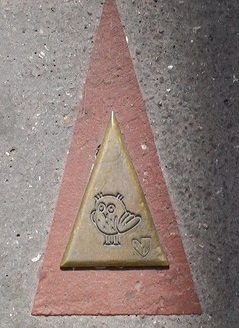

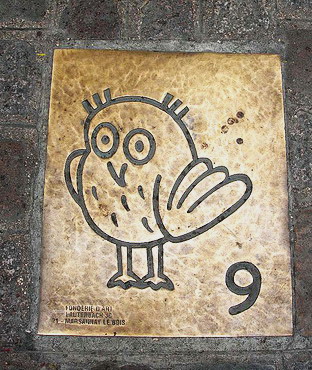
| A great way to discover Dijon is by
following
the
Owl's trail. This will lead you to 22 top attractions. You can get an
English brochure or audio guide from the tourist office and see Dijon’s
main sites at your own pace. The trail is named after the stone owl at
Notre-Dame and don’t forget to rub it (with the left hand) as it
reputedly brings good luck. |
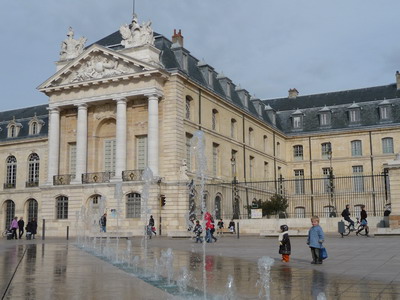
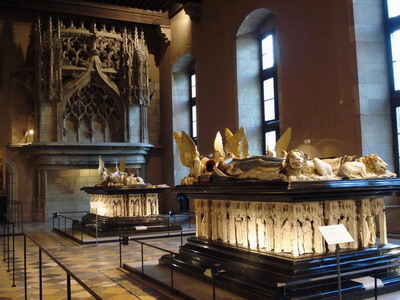
| The Palace of the Dukes of Burgundy lines one side of Dijon's central Place de la Liberation. Part of the palace has been converted into Dijon's Town Hall, but the rest (the Fine Arts museum) contains, among other things, ducal kitchens that date back to the mid-1400s and a sprawling art collection of European paintings from the early Renaissance to the Impressionistic periods and some of the tombs of the Dukes themselves. |
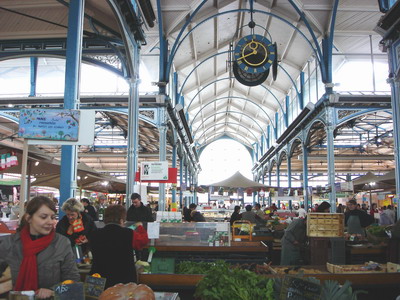
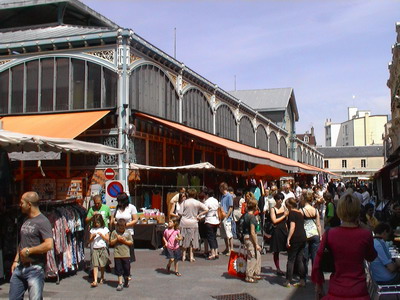
| Great food and great wine IS Dijon. Dijon is
famous for its mustard, its wonderful pain
d'épices (a sweet bread made
with honey and spices), its liqueur
de cassis (blackcurrant liquor,
delicious when mixed with dry white wine called Aligoté to create
a
Kir), its escargots, boeuf
bourguignon, coq au vin, oeufs en meurette, jambon
persillé, and of course the world-renowned Burgundy wines. Don't forget to visit the covered market in Dijon “Les Halles” every Tuesday, Thursday, Friday and Saturday. This wonderful market was designed by Gustave Eiffel and on Saturdays, it spreads outside and there is more "stuff" including some antiques. It feels like it's been there every week for over a millennium, with its meats, cheeses, fresh vegetables and fruits, baked goods, mustard, gingerbread, and on and on. With the Notre Dame cathedral on one side and Dijon's colourfully tiled roofs all around, the market is the centrepiece for a leisurely walking and shopping tour of the old city. Don't miss it for a quintessential French experience!! |
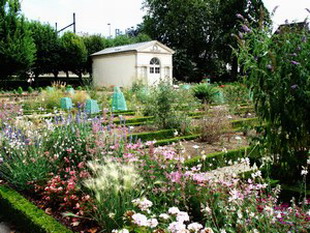
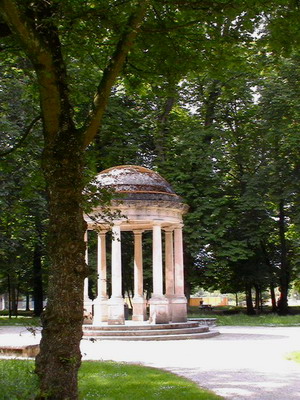
| The historic centre has tasteful floral displays in good taste, and there are around twenty gardens, both recent and historic, which are worth going out of your way for. Here are the main ones in the town centre: The Jardin de l'Arquebuse on the old practice ground of the arquebusiers of Dijon is partly made up of a remarkable botanical garden laid out in four great squares, reminiscent of the medieval gardens of "herbs and simples". Around 4,000 species are grown here. The Parc de la Colombière is "the finest avenue in my kingdom", said Louis XIV. Created in 1672 by a student of Le Nôtre, it has very fine trees. The special feature of the Darcy Square, created in 1870, is the hidden reservoir of water, used for its many pools and basins. The entrance is guarded by the great sculpture of a bear by animal sculptor François Pompon. Kir Lake is also one of the dijonnais' favourite walks. Dijon is also the starting point of the wine coast with "la route des grands crus" to Beaune with all the prestigious Burgundy wines! |
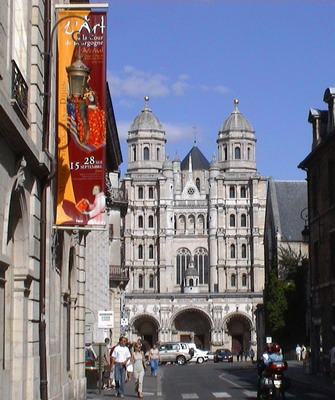
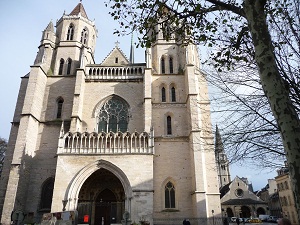
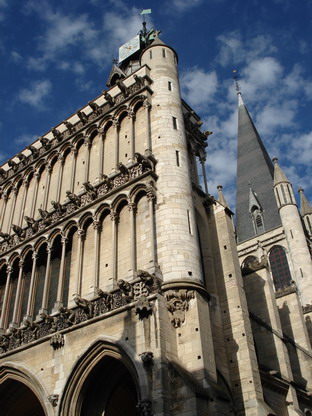
| Dijon boasts a large number of churches and cathedrals, including St. Bénigne, Notre-Dame, St. Étienne, St. Michel and St Philibert (the only roman church in Dijon). The crypt of Dijon Cathedral, dedicated to Saint Benignus, dates from 1,000 years ago. The city has retained many architectural styles from many of the main periods from the past millennium, including Gothic, Renaissance and Capetian. The magnificent synagogue in the Moorish Revival style, was built rather late in 1879, modeled on the Paris synagogue in the Rue de la Victoire. |